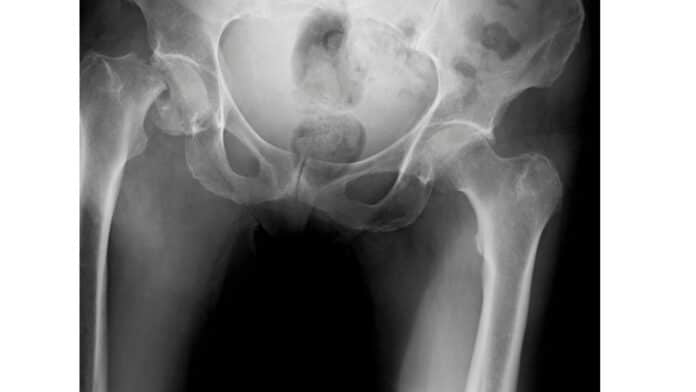Every year, 70,000 older people are admitted to a UK hospital after suffering a hip fracture, putting them at high risk of death and emergency hospital readmission. Hip fracture services are delivered through complicated multidisciplinary organizational systems that are governed by national standards, guidelines, audits, and financial incentives.
Getting It Right First Time (GIRFT) is a national program designed to improve the treatment and care of patients through an in-depth review of services, benchmarking, and presenting a data-driven evidence base to support change. The Royal Osteoporosis Society (ROS) and academics from the University of Bristol have launched an updated ‘toolkit’ for senior clinicians and hospital management that enable them to change their organizational structures and enhance the quality of hip fracture care across the UK.
Jill Griffin, the ROS’s Chief of Clinical Engagement, said, “The research findings have given us valuable information and shown us how we can work with healthcare providers and hospitals to improve patient recovery after a hip fracture. The study data has enabled us to make recommendations that we have used to build this toolkit for healthcare professionals, and our aim is that it will dramatically improve the quality of care for everyone who suffers a hip fracture.”
Griffin was the project’s primary investigator. She worked with Celia Gregson, Professor of Clinical Epidemiology and Orthogeriatrician in the Musculoskeletal Research Unit at the University of Bristol and the study’s principal investigator, to create the guideline, which is currently available on the ROS website.
Professor Celia Gregson added: “The REDUCE study hip fracture toolkit is the product of a 3-year research program. Our research has identified substantial variations in how hip fracture services are delivered across England and Wales. Such variation is not justified on clinical grounds, and this variation in clinical practice translates to differences in important patient outcomes, like time spent in the hospital, risk of death, recovery of mobility, as well as how much hip fracture care costs the NHS.”
“As a team, we wanted to try and tackle this by making it easier for (often very busy and overstretched services) to implement changes locally, to make hip fracture care more equitable across the country. Hence, we developed this toolkit. It provides practical, evidence-based guidance on different aspects of the complex care pathway for hip fracture patients, from the emergency department to hospital discharge. We hope this new library of tools provides a useful resource to the hip fracture community, and we are interested to hear from services who use it to successfully improve their hip fracture care pathway.”
Mr. Bob Handley, Orthopaedic Trauma Surgery Clinical Lead from GIRFT, said: “The REDUCE study provides clear insights for frontline staff on what practices are associated with improvements to outcomes including length of stay for hip fracture, which will often be relevant to other non-ambulatory fragility fractures. We know that the potential benefits of adopting these practices could be significant, which is why we are recommending orthopedic trauma services consider the insights coming out of REDUCE to help improve the length of stay. The study’s cost-benefit calculator will support trusts to do this, and we strongly encourage trusts to use it.”
The study’s main findings indicate that how hospitals provide patient care is connected to longer-term patient recovery. Patients had a decreased chance of dying at hospitals where hip fracture staff met regularly to address patient input as a team, according to the study. Also, patients spent two days less in hospitals where staff could get at least 90% of hip fracture patients out of bed the day following surgery.
The toolkit, described as a “comprehensive masterpiece” by one early user, tackles several areas of the care pathway, including guidance on training, clinical team planning, service specifications, quality improvement, and patient discharge, making it simpler for hospitals to enhance the service they deliver.
Along the hip fracture care route, They discovered many organizational-level characteristics, which are theoretically modifiable, and linked with significant clinical outcomes.
All medical professionals and service managers have free access to the REDUCE hip fracture service implementation toolkit.
Journal Reference:
- Jill Griffin, Sarah Drew, et al. Multiple hospital organizational factors are associated with adverse patient outcomes post-hip fracture in England and Wales: the REDUCE record-linkage cohort study. Age and Ageing. DOI: 10.1093/ageing/afac183
